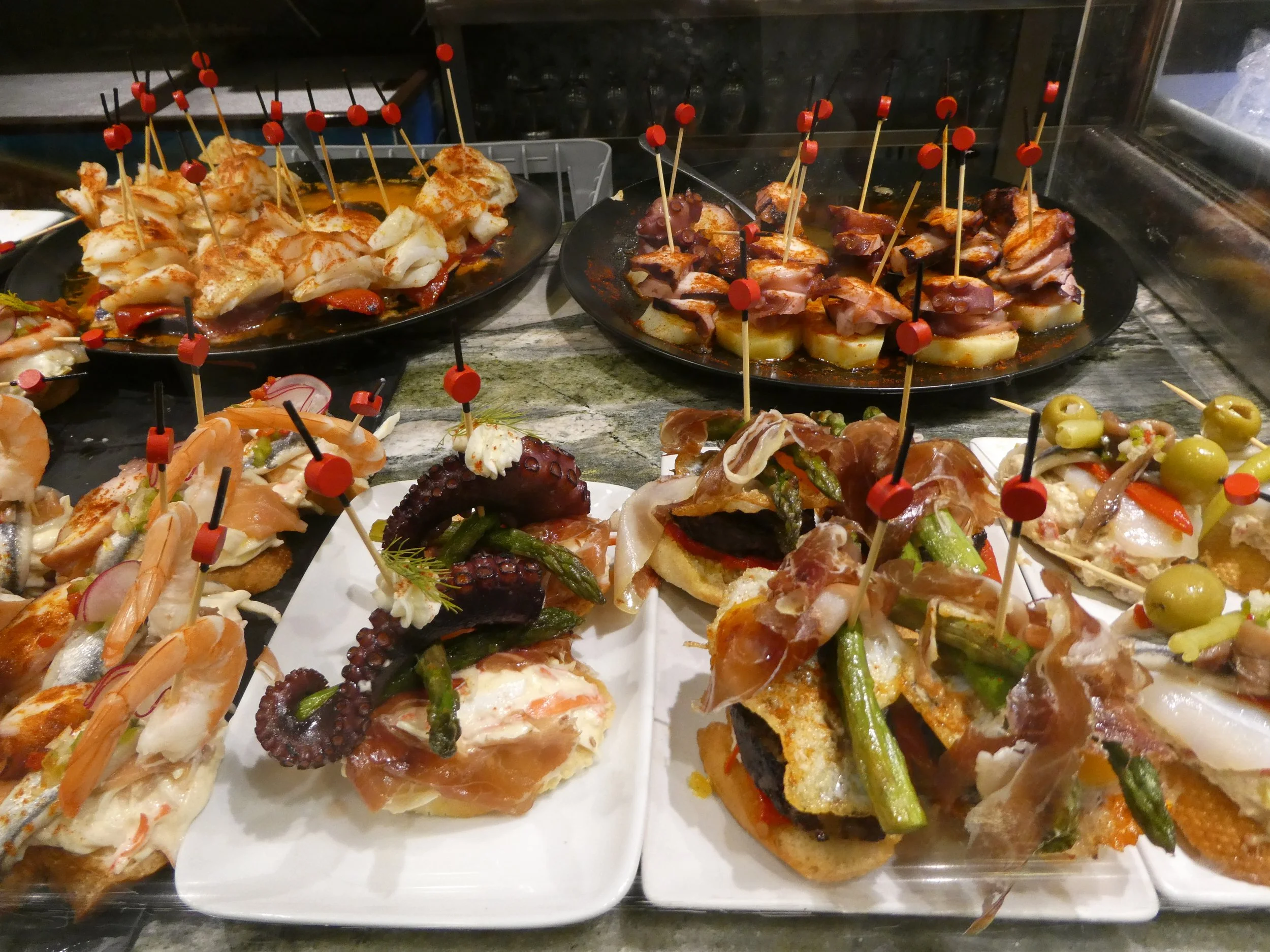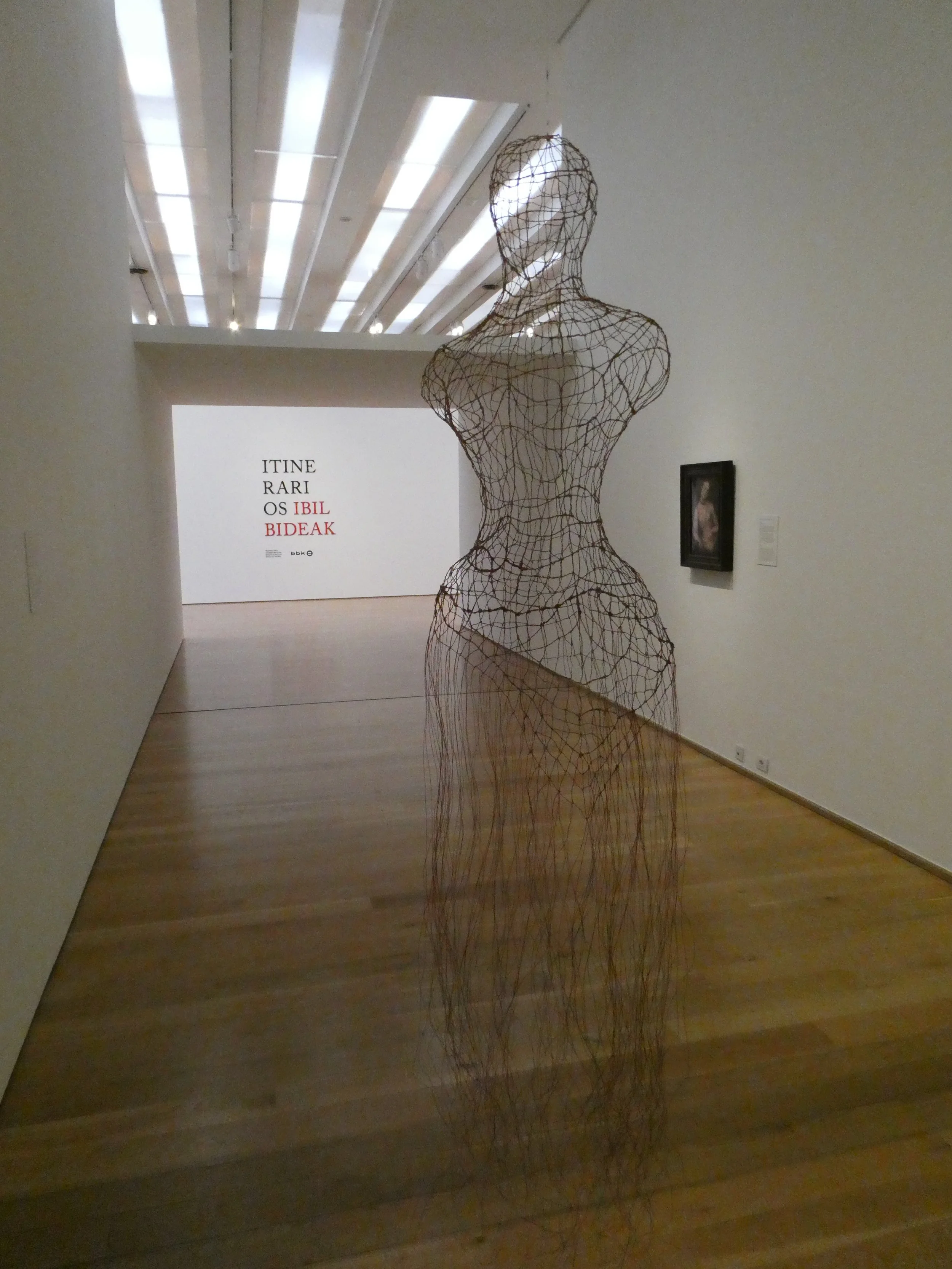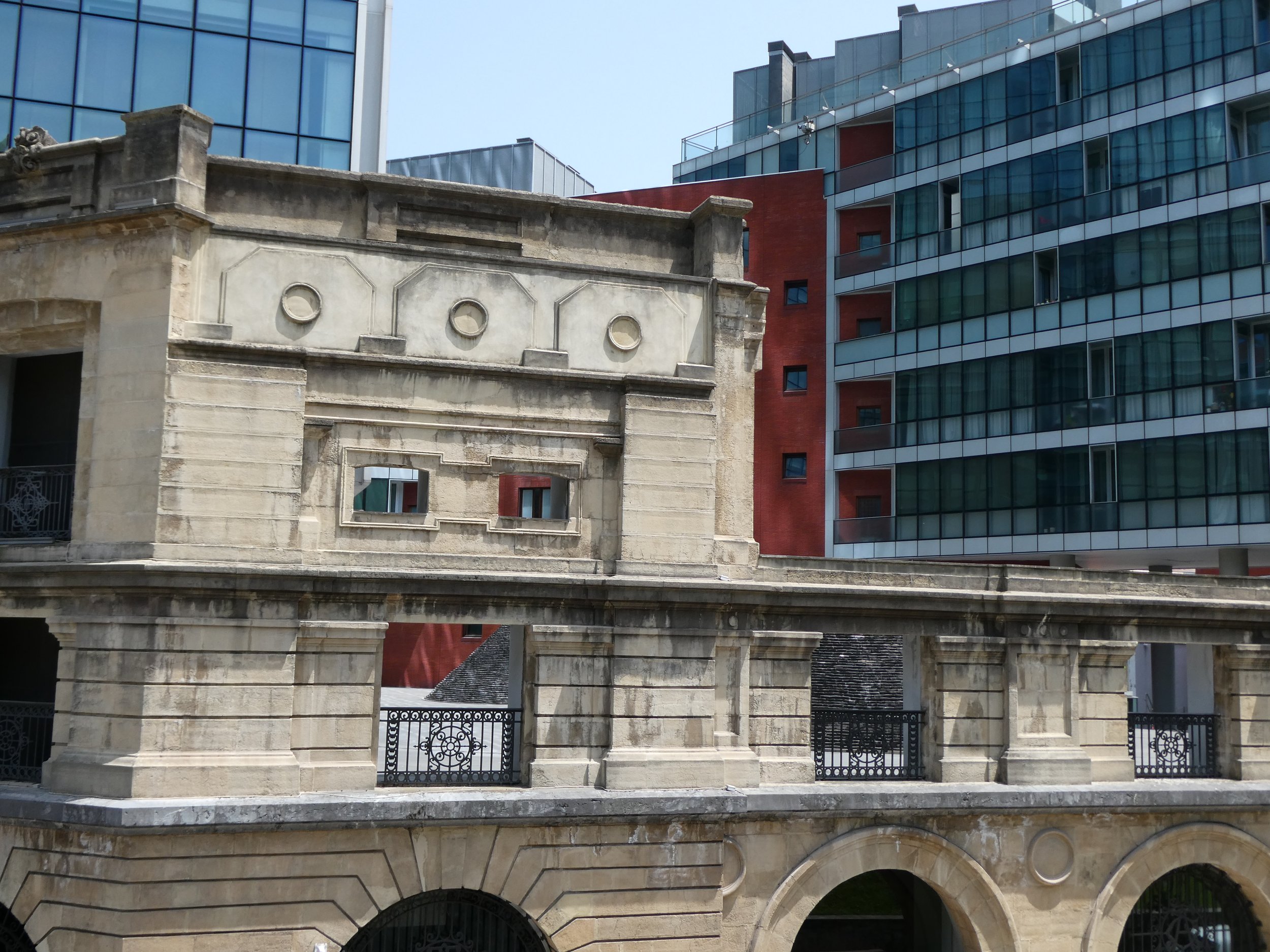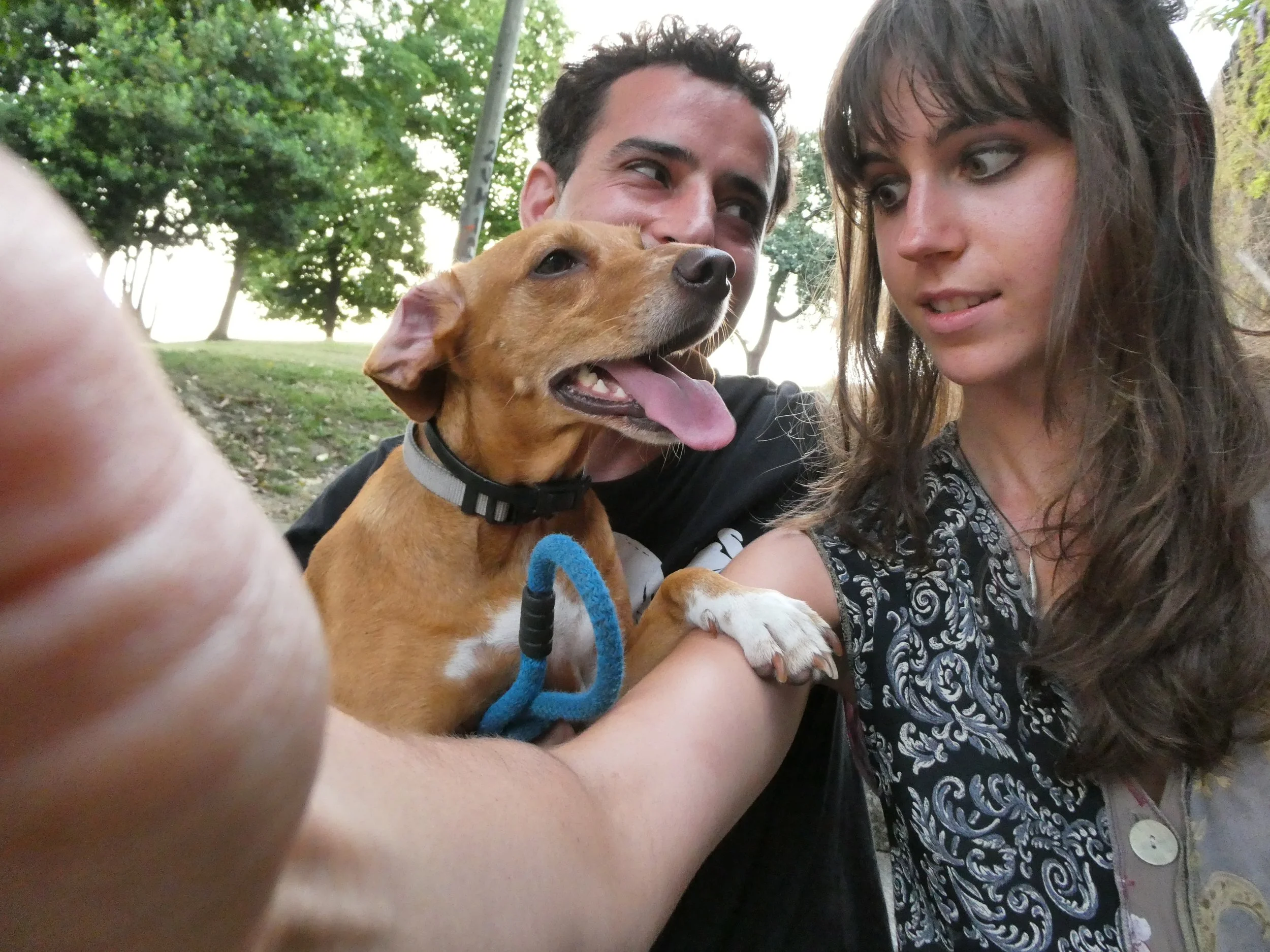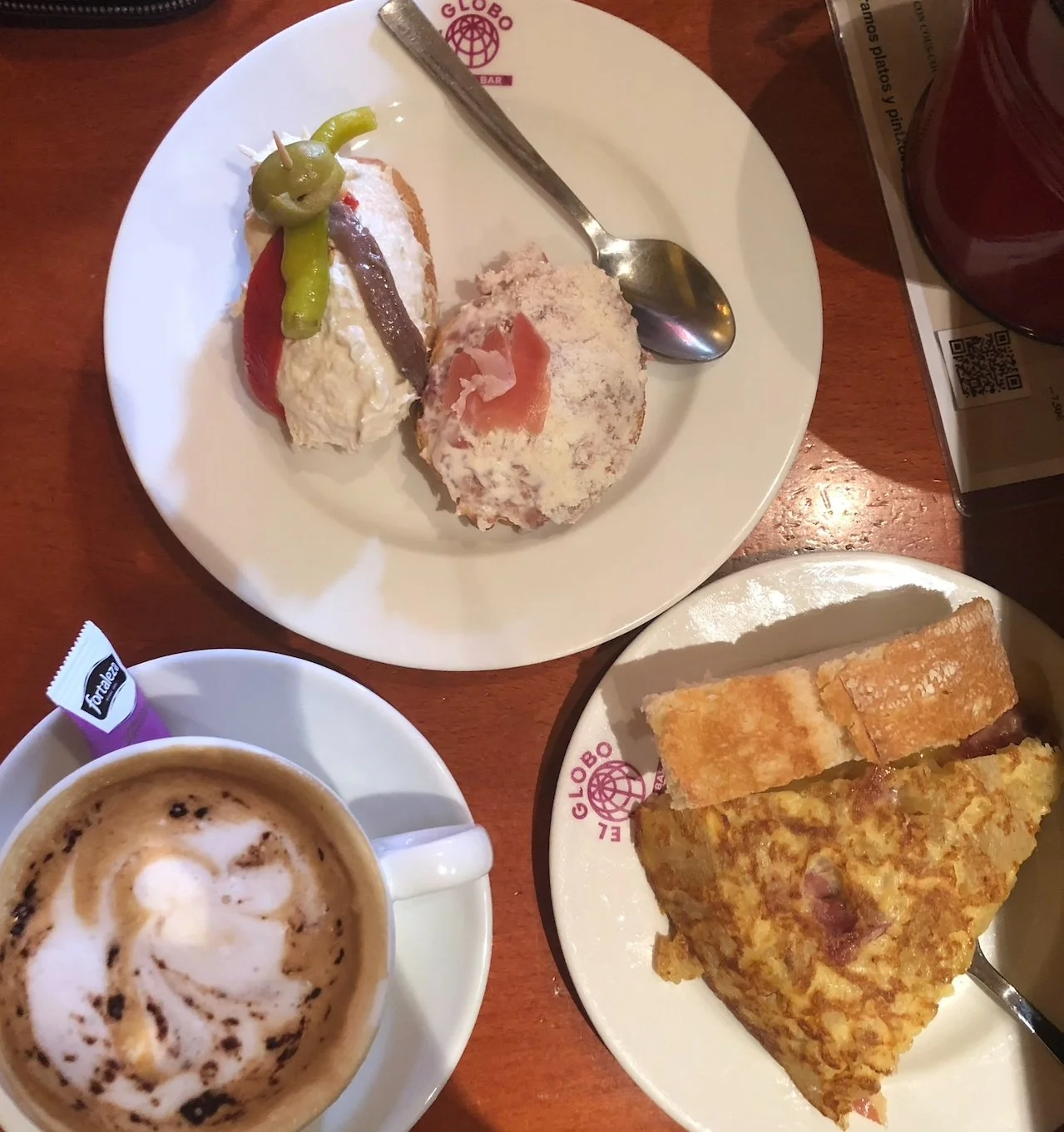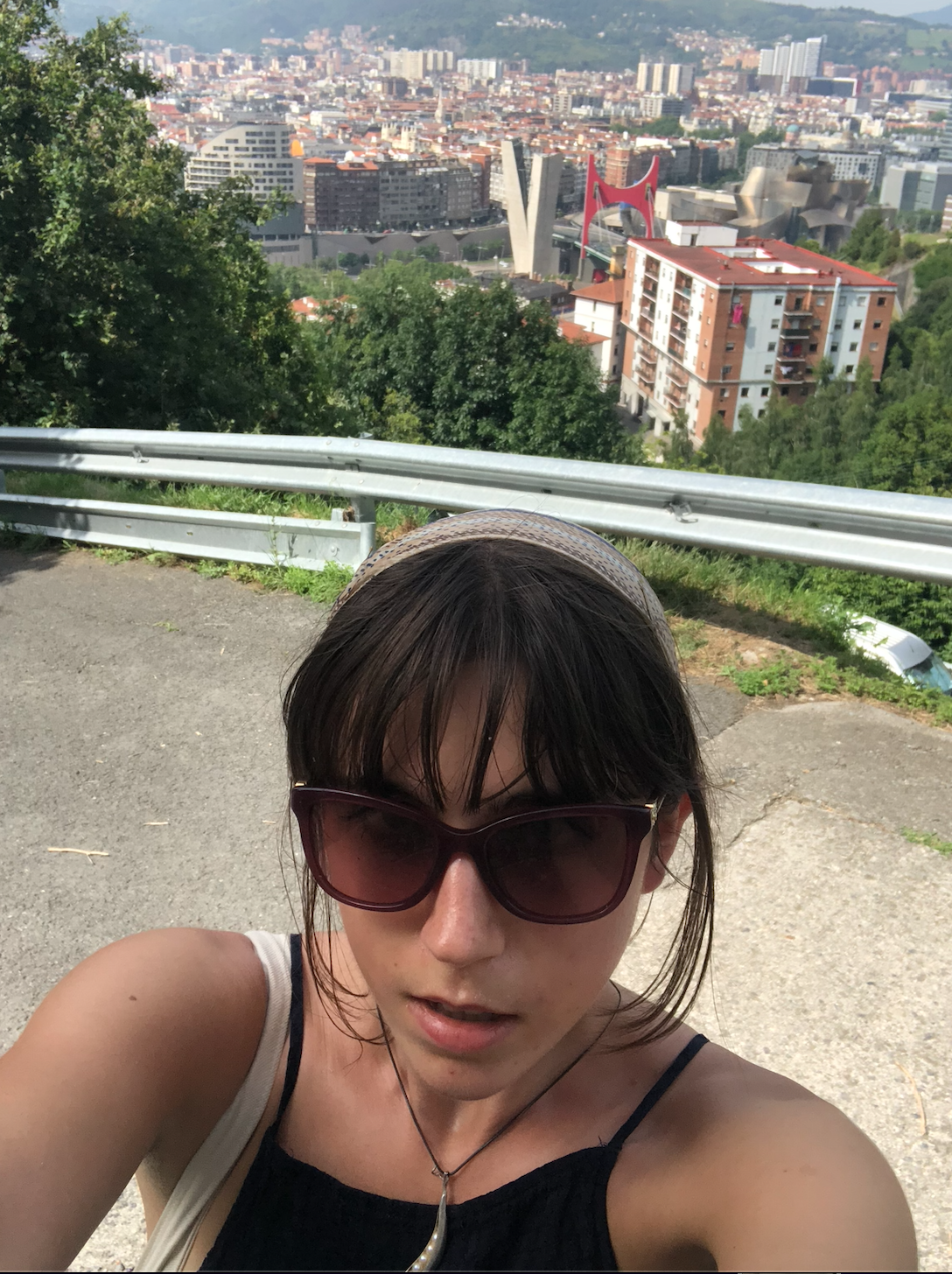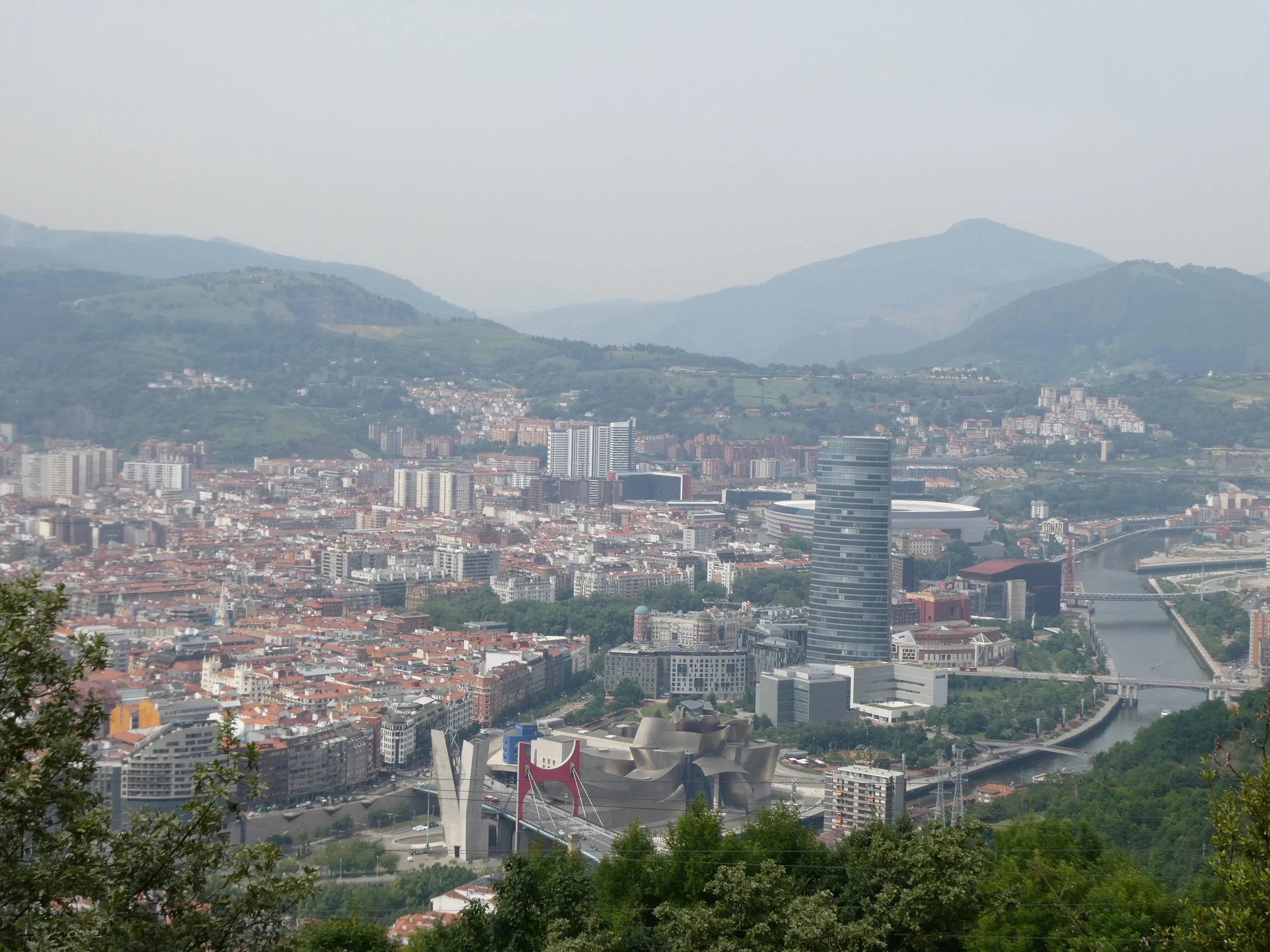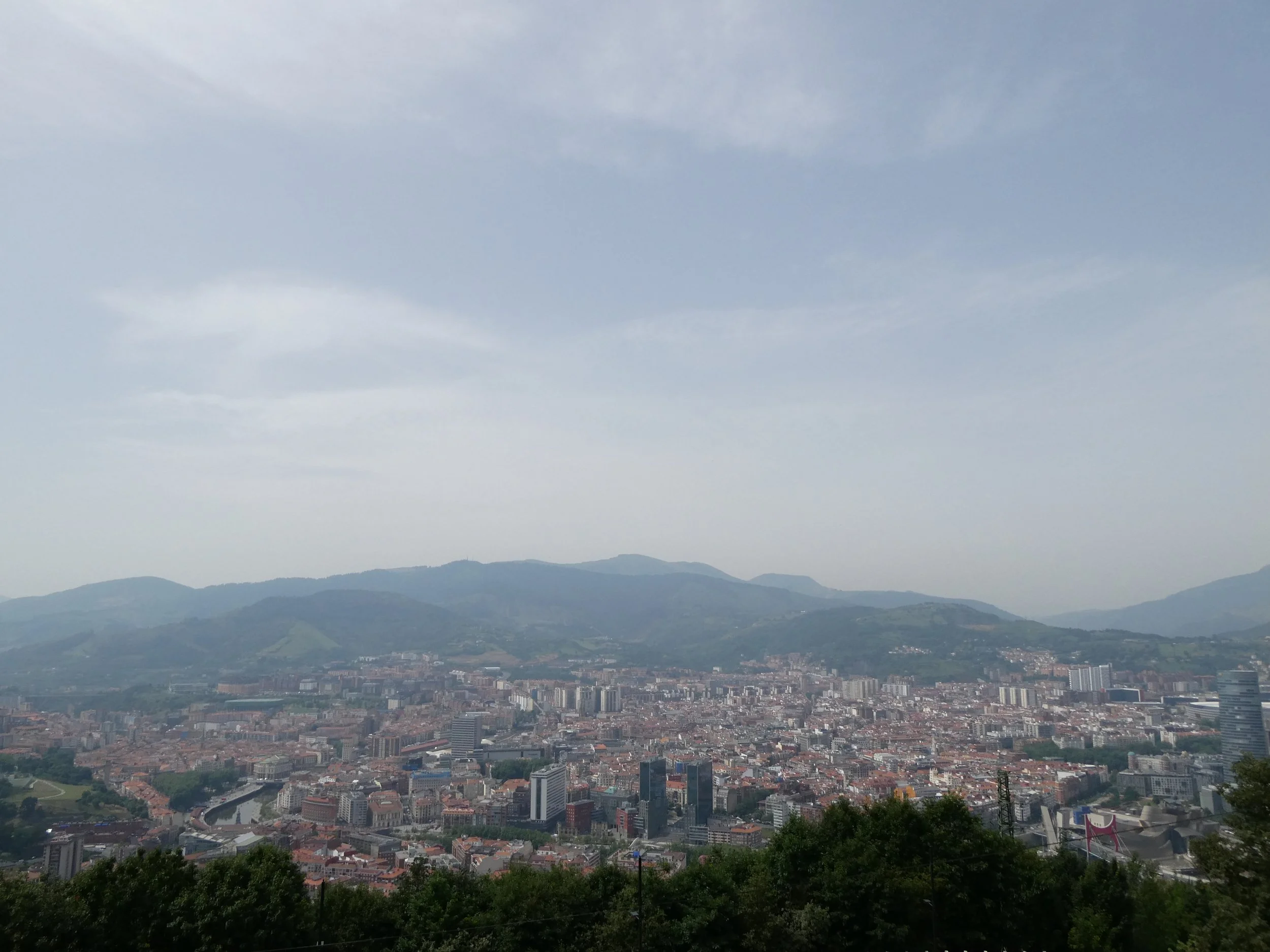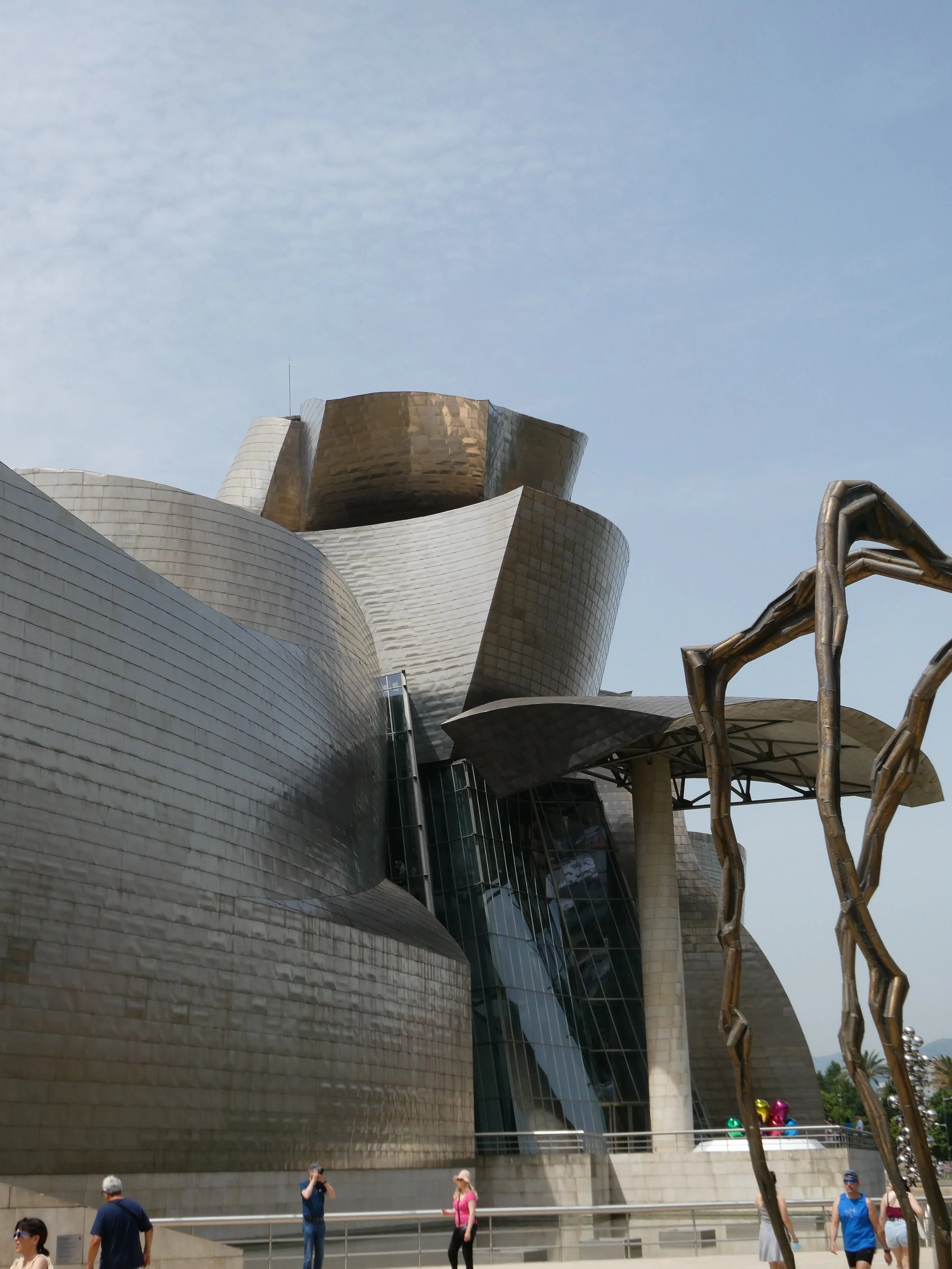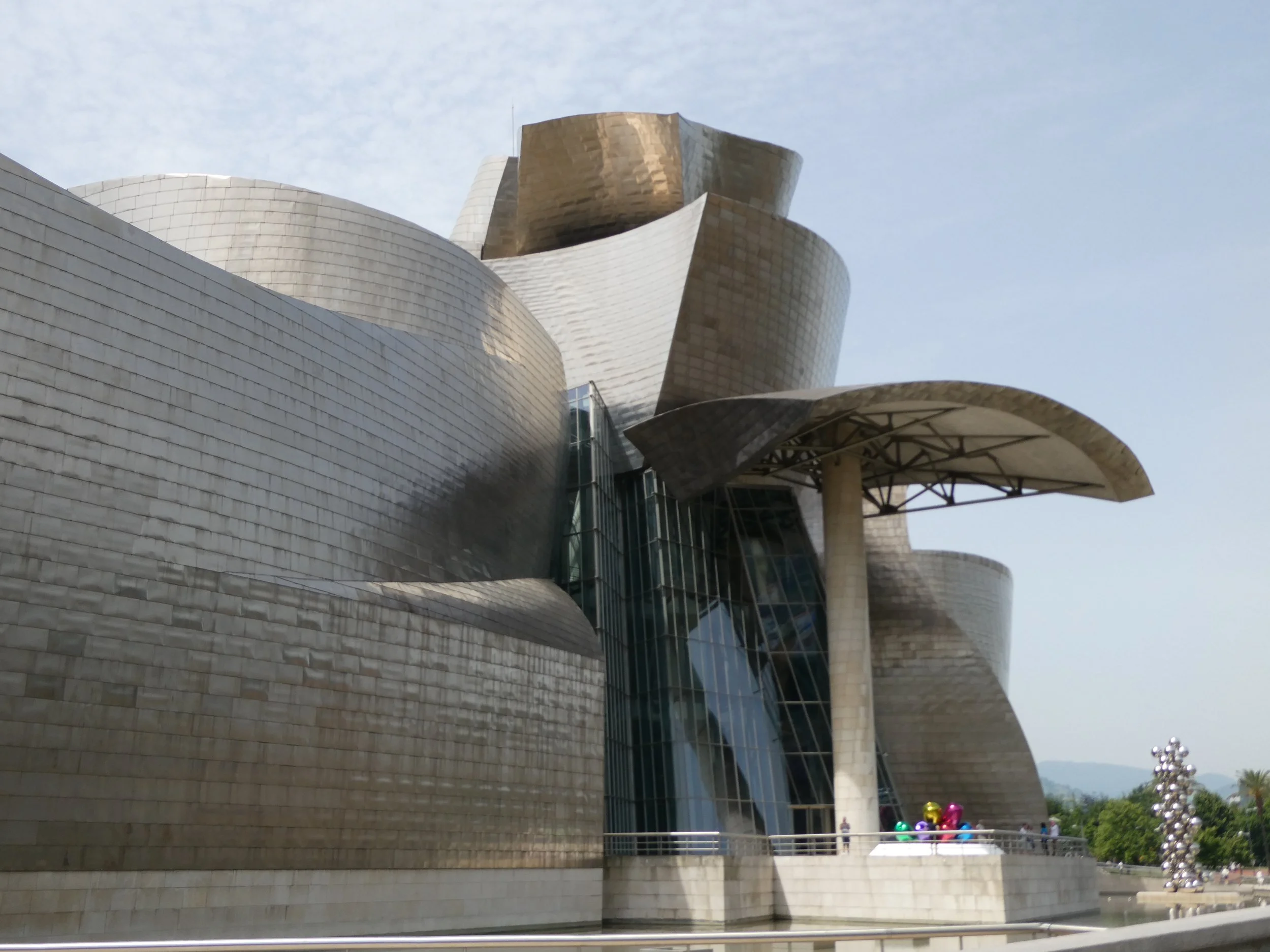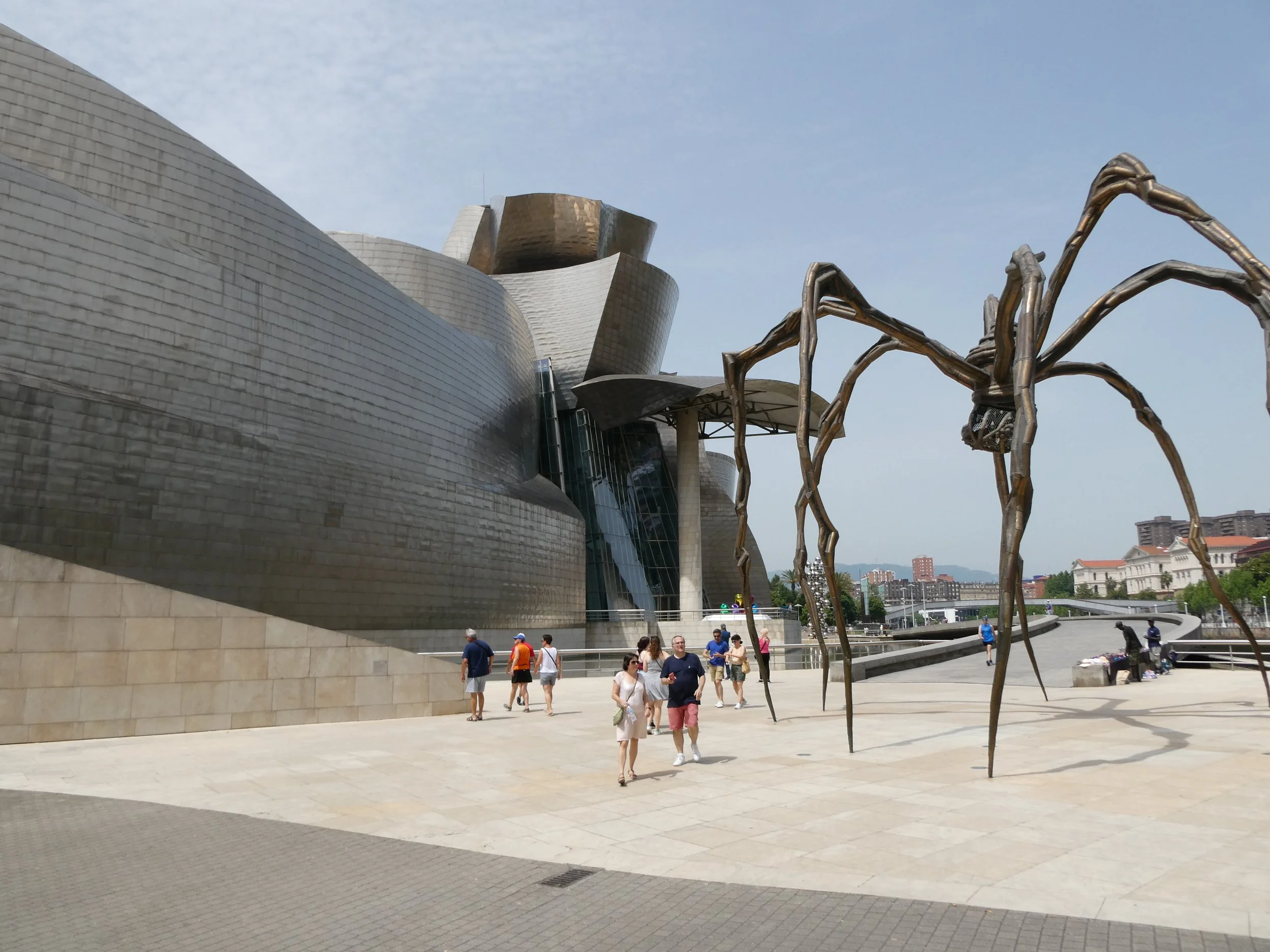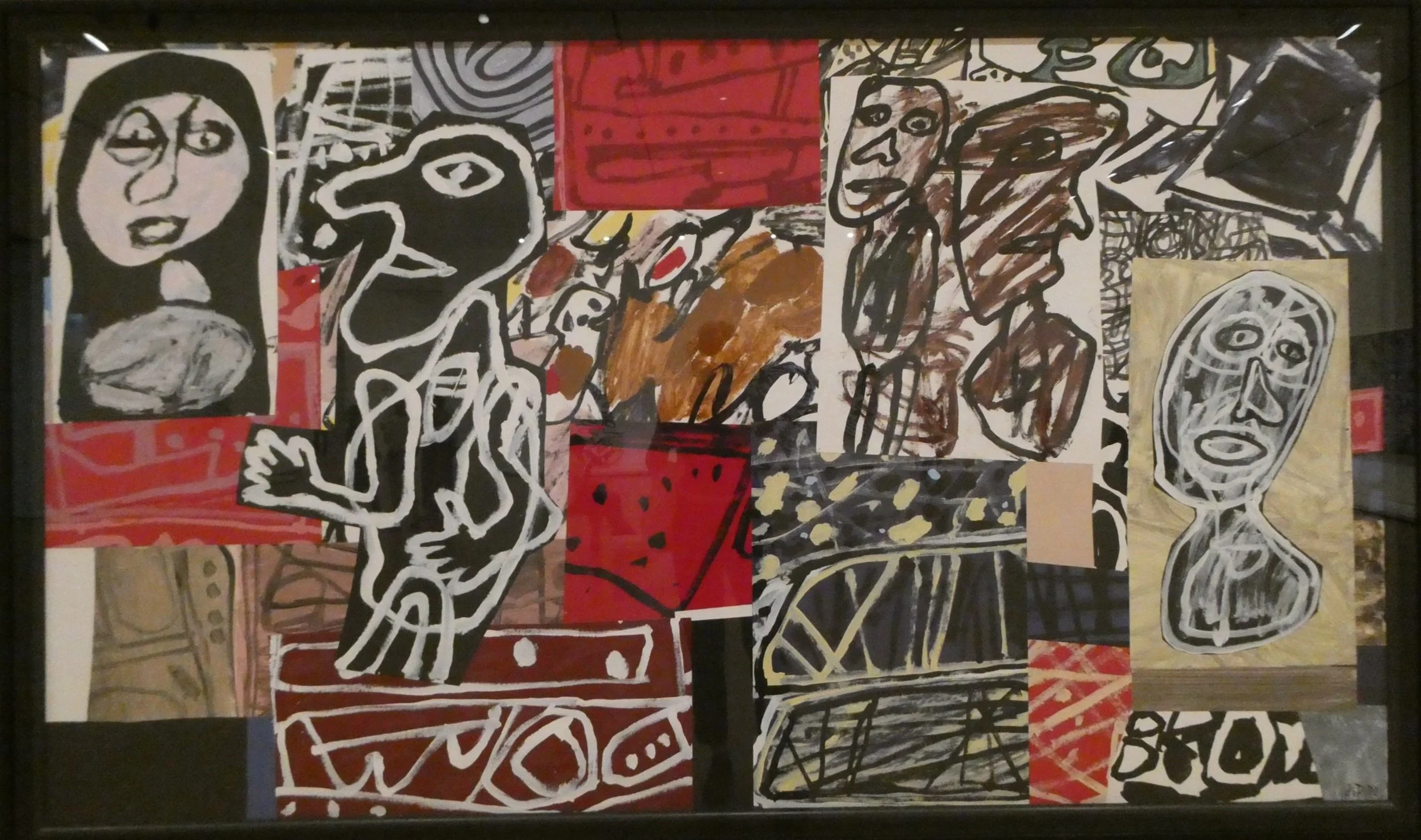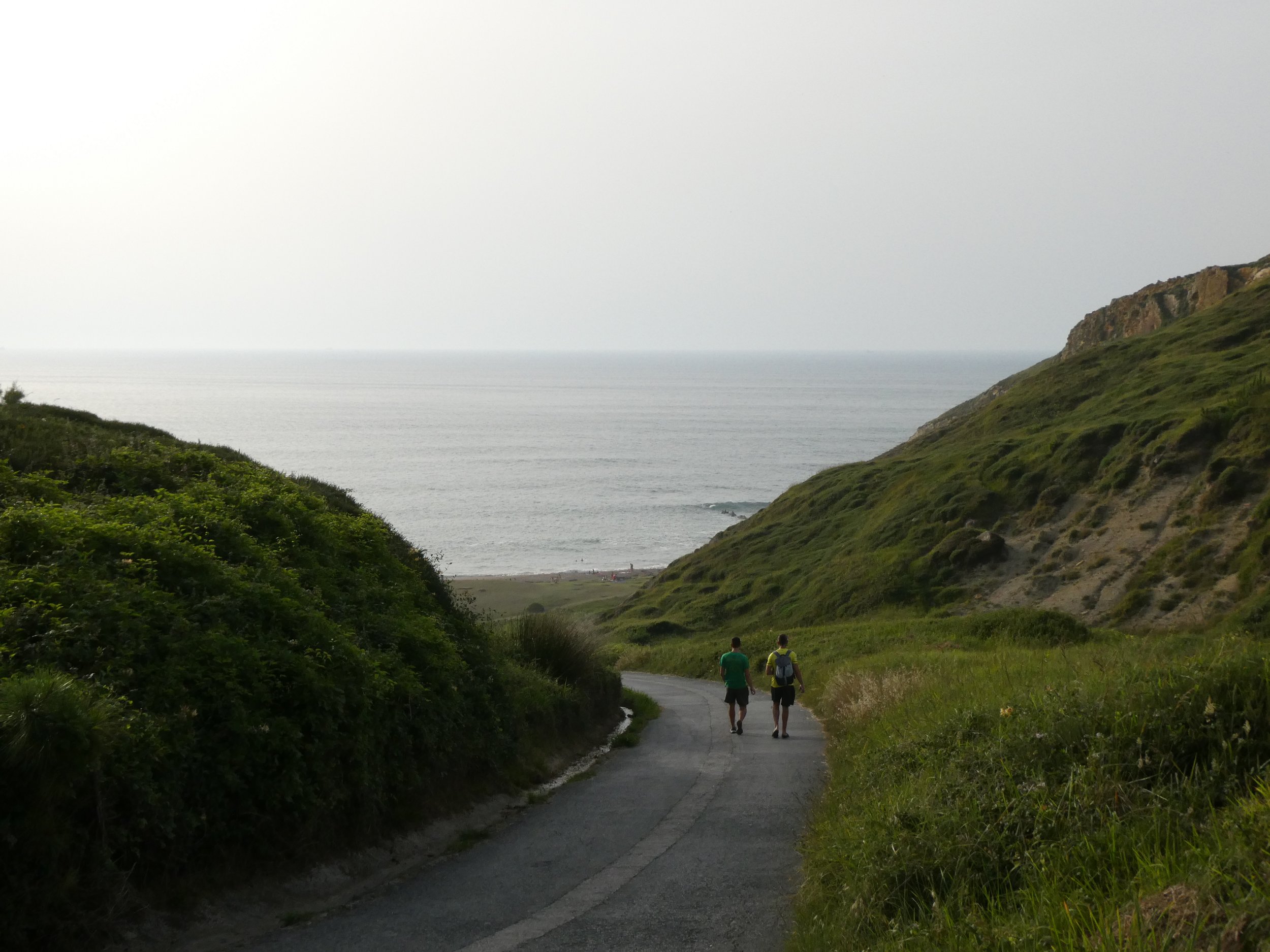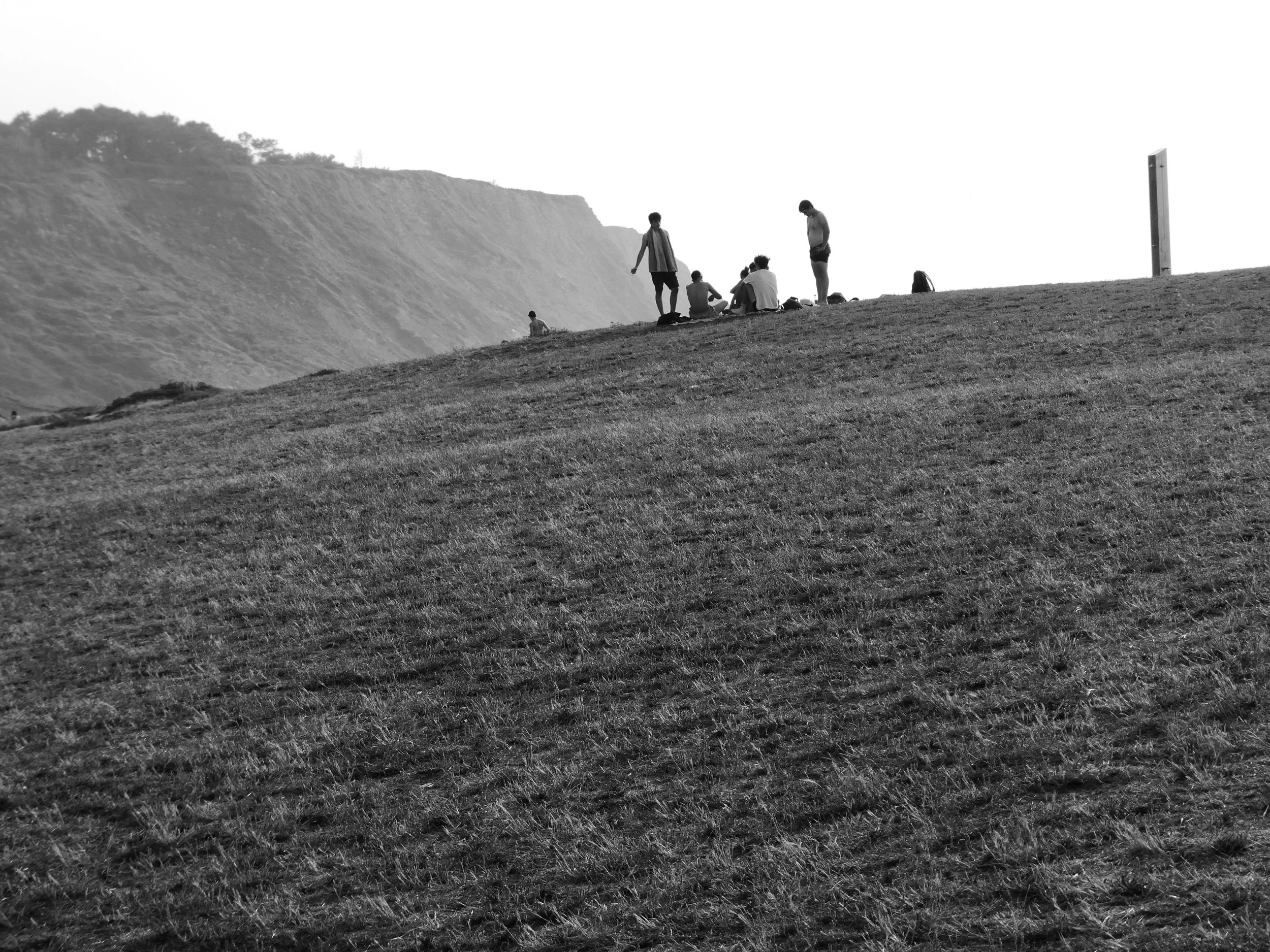Bilbao
The combination of the delirium and relief had me feeling very drug-y-ly numb upon arriving at the Bilbao hostel. The smell was great. I smelled it a few seconds before I actually reached the door. I found the front desk and waited for about 10 minutes as someone else was taking ages to check in, but I didn’t really consider it because 1. I was so zoned out and 2. I was just delighted to be there. At one point a girl came up to me and started rambling in Spanish about something having to do with her ankle, I think, but I was so out of it that I just stared at her, and it was the person at the desk who eventually told her that I spoke English. (Which was an assumption.)
The bed was shockingly comfortable, there were curtains for each one, and I would be delighted if we had that shower at home. I slept for 10 hours.
I must start by giving credit to neighbor Vinnie in Brooklyn, who suggested only about a week out from my departure that I go to Bilbao. Once I was able to restore mental and physical comfort there, quite quickly, I began thinking about how I am glad that I had to deal with the whole intervention between leaving Porto and arriving in Bilbao, and also that I am proud of myself for how I dealt with it all. Firstly, I think a trip like I am doing would be incomplete without such hurdles. All the technologies, like google translate and online maps, certainly minimize the opportunities where hurdles can germinate, but what a pity it would be for spontaneity to be so regulated, as would concurrently happen with consistent smoothness. Surely I would not have enjoyed Bilbao so much had I not just had such a rough run. And secondly, I’m glad it came early. If tedious disruptions happen again, though in terms of transportation I have reasons to believe that they will not to such severity, I’ve been through it.
Moving on: the history of Bilbao is remarkable. It is located in the Basque region of Spain, on the north coast. For many centuries, it was a small, modest fishing city, though still had a noted status. The Camino de Santiago was even redirected so that it would pass through. Subsequently, the city became more involved in global trade due to its prime location at a port. In more recent centuries it became an economic powerhouse, mainly because of its iron and steel resources. Then there was a massive economic crisis in the 1980’s and the city was left filthy and depressed. Apparently people wouldn’t even hang their clothes out to dry because they would get covered in pollution, and there was a rumor that if one were to stick their hand into the river, they would grow a few more fingers.
It is largely the Guggenheim Museum of Bilbao, designed by Frank Gehry and completed in 1997, that now stands not only for the city’s recovery, but its resurge of a new prosperity. The museum was a huge investment, and constructing such an elaborate holder for art was the least of most people’s concerns. But ultimately it nurtured recovery and renewal, and then forged the redefining of the city. Now it is populated with tourists, though not disturbingly so, has a rich culture and some remarkable architecture, the river is reasonably clean, and it has a very impressive number of Michelin star restaurants. (Unfortunately I decided to start guarding my bank account a bit more closely and did not eat at any.)
Some of the wonderful bridges that now stretch across the river, which dissects the city:
Bilbao is also known for its pintxos, which is their equivalent of tapas though more substantial, made with thick pieces of bread and often lots of rich toppings.
Typical pintxo display.
My Pintxo Debut: prosciuto with shishitos; ham, cheese, tomatoes, anchovy; pepper and garlic.
I actually enjoyed the Museo Nacional de Bellas Artes (Fine Arts) more than the Guggenheim. I would argue that it’s the kind of museum that New York, for instance, is missing: a very reasonable size, a great variety of eras and themes, and refreshingly unpretentious.
Some of my favorites:
I realized pretty quickly that actually traveling alone for pleasure, rather than trying to do so, brought a new breed of difficulties. Previously, in Vigo, the loneliness and awkwardness asserted themselves more like symptoms of the other difficulties of inconvenience. However, now that I was not investing my energy into dealing with tedious and draining things, and instead traveling for the sake of traveling, the sensations of isolation and discomfort were more conspicuous.
I’ve been thinking a lot about both language barriers and cities as inducers of loneliness, but also as alleviators. On one hand, a city is not concerned with the individual: it is easy to blend in and difficult to feel acknowledged. However, at least being someone who is very familiar with living in a city, the fact of so many separated lives occurring side by side is also able to extend for me some solace. And because of this universal paradox of metropolitan loneness and activity, being absolutely alone and anonymous in a city therefore is not so vulnerable to stinging.
Pause for some striking architecture:
Likewise, the language barrier is alienating, and drainingly so. But sometimes it has a similar effect to the experience of being alone in a big mass of people. Bilbao is still very detached from English-centricism, and the majority of people don’t know any English. With very little knowledge of the prominent language, it becomes impossible to get a great deal of the information that we typical take for granted. I’ve been realizing how extremely verbal communication is a priority and a source of security for nearly everyone.
It’s difficult to feel secure without the ability to communicate and comprehend with words. It’s kind of like a sense is taken away. But, as the absence of a sense tends to make the others stronger, I’ve been trying to focus more acutely on the methods of perception that I do still have. I’ve been more intentionally noticing things like the way people move, and if you can predict people’s actions just by their tones.
Even though the mental difficulties would sporadically flare, I was reasonably well able to manage them. Bilbao is also a fine city for the lone traveler.
Amphitheater by the river.
I spent the evening wandering around the old section, and then decided to climb up the 300 something steps to see the whole city from above. Along the way I heard a familiar kind of male greeting behind me, which typically I ignore, but this one demanded at least some kind of acknowledgement because it was getting closer, and I also figured that it might be more enhancing than walking alone. It turned out that this guy only spoke Spanish and Arabic, and so I used whatever Spanish I have and tried to gather all the Arabic I remember from high school, and we were able to achieve some level of communication. That was cool. He took me up the mountain the way that the locals go. Eventually it was no longer very cool, and I told him that I had to go meet my amigo immediately.
Karim and his dog Tagine before my quick departure.
Definitely the best pintxos I had, late that night, though possibly the least appetizing looking. From El Globo, which is indeed considered by many to have the best ones in the city — so best in the world?. The one on the left was some kind of poppy seed thing with something succulent on top, and I have no idea what the other was — something kind of eggy or cheesy but not quite.
In the morning I returned to El Globo. Pictured at the top, again, the pintxos don’t look quite as appetizing as others, but they were divine. I also tried a Spanish omelette with…. yes, ham and cheese.
Not the most pornographic shot, but it was pristine.
I had planned to be treat myself by being physically moderate than I typically am to get to the highest lookout point of the city, which would be via the funicular (instead of walking). This seemed reasonable also because the high of the day was 96 degrees. Though when I arrived at the station, I decided, unsurprisingly, that the funicular would be boring and that I should walk instead. I ended up taking backroads and cutting through people’s yards. The heat was no joke.
Right at the moment when the sweat is hovering just underneath the glands before it pours out.
Between slews of napkins and the hand dryer in the bathroom, I was able to remove most of the sweat from my body (and did take the fanicular down to mountain) before my first non-pintxo meal at the Guggenheim Bistro. A strange experience — I basically observed the two women sitting near me and compared my eating pace to everyone else’s the whole time — but the food was nice.
Gazpacho with a prosciutto tostada number, and a large cube of jarringly tender lamb.
The Guggenheim Museum (designed by Frank Gehry):
As I mentioned, the exhibitions were not remarkable to me, though they had two Anselm Keifer paintings that were absolutely amazing to see in person:
There was an exhibit on French artist Jean Dubuffet (1901-89), who explored the unconventional and refigured the distasteful, primarily in terms of beauty but in other senses as well.
I didn’t love must of his stuff, but I appreciate a lot of its originality:
Seems to showcase a most simple kind of deformity while undeniably projecting wholesomeness, fulfillment, relatability.
A vivid quote the curators included: “We must not confuse what the eye apprehends with what happens when the mind takes it in … The mind totalizes; it recapitulates all of the fields; it makes them dance together. It stirs them together, it exchanges then, in it everything joins in movement. It transforms them too, it reworks them into its own guise.”
More of the Zubizuri Bridge, designed by Santiago Calatrava (who also designed the World Trade Center station):
On my way back to the hostel I bought the classics: cheese, (new variety, though, of the Basque region) cherries, tomato, cucumber, peach. The Portuguese cheese was much closer to a brie, and very pungent, while the Basque cheese was hard and more mild.) This would be my dinner for my evening beach excursion.
The beaches there are a bit difficult to access without a car — I took a train to the end of the line and walked about 45 minutes. Everyone else seemed to have driven.
Once it got unbearably windy I walked back up the steep trail to return to the road. When I reached the top I looked out to the water and noticed a black shape hovering in this massive wind so still that I thought it was some kind of invincible drone. I looked away for one moment to see if anyone was in sight controlling it, and when I turned back I saw a black streak falling down, as if it had been shot from above. Then it soared back up, and resumed hovering in that very same single place. I saw it swoop several times. Then more of these birds started to appear all over the sky, however they would all drift a little bit with the wind while they were looking for their meals. The original bird was the only one who could stay absolutely still.
I took a nice hostel shower, and ran into the girl who had just arrived, moving into the bunk above me. She was a Russian woman precisely my height. Always a joy. Pity I was to leave the very next morning.
Another shoutout to Vinnie, who advised I go to a gin bar whose owner he met four years ago when he visited Bilbao. I got there a bit before 1AM and it was nice and quiet, soon to close. The guy clearly makes gin and tonics in all states of consciousness, in huge goblets with huge ice cubes and big lime rinds, which he juices perfectly with two little tongs.
Food highlight from the last morning before my lovely, direct train to Barcelona. Something like a tuna salad sandwich with egg playing the role of bread. Great inspiration for a Keto on hiatus.
… then boarded a lovely direct train to Barcelona…




